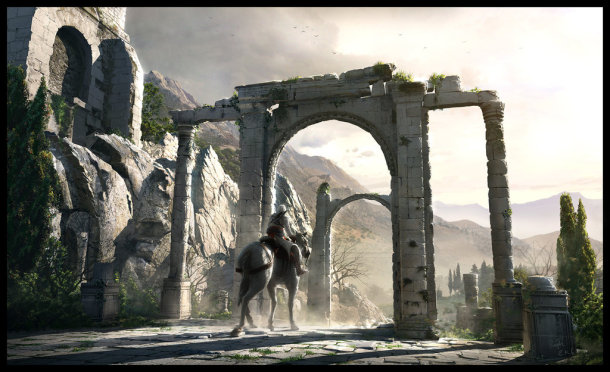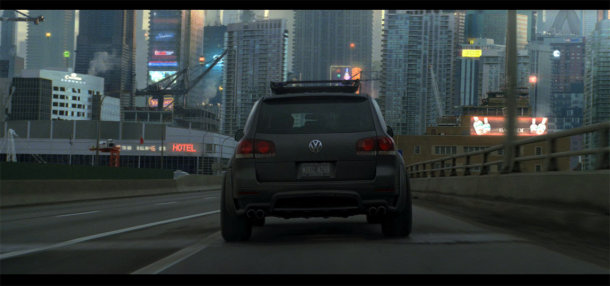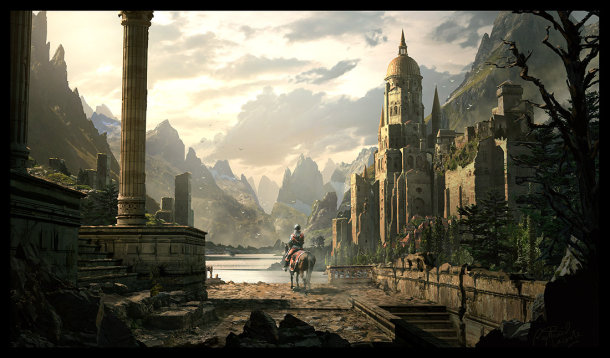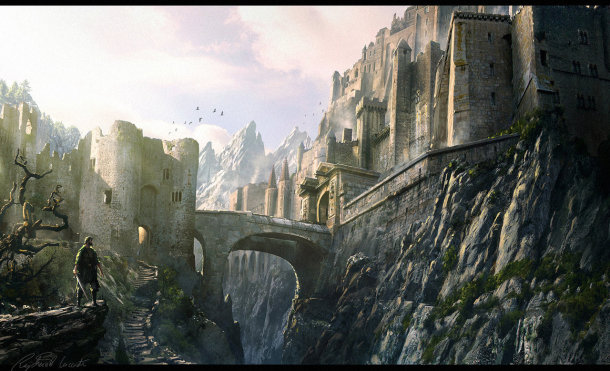Career advice: Raphael Lacoste, Ubisoft
 In the latest of our series of articles on breaking into the CG industry, we talk to Ubisoft Art Director Raphael Lacoste. The winner of a VES Award for his work on the cinematics for Prince of Persia: The Two Thrones, Raphael has also worked in VFX as a senior concept artist at Rodeo FX and print advertising as a freelance artist for Ogilvy & Mather.
In the latest of our series of articles on breaking into the CG industry, we talk to Ubisoft Art Director Raphael Lacoste. The winner of a VES Award for his work on the cinematics for Prince of Persia: The Two Thrones, Raphael has also worked in VFX as a senior concept artist at Rodeo FX and print advertising as a freelance artist for Ogilvy & Mather.
Born in Paris in 1974, Raphael studied fine art at college, then took a Master’s degree at the Centre National de la Bande Dessinée in Angoulême. He currently lives and works in Montreal, Canada. We asked Raphael for his advice for would-be art directors and concept artists.
What does your current job involve?
I’m responsible for the visual direction of a new IP here at Ubisoft. Unfortunately, I can’t tell you what it is: just that it’s great! I supervise the concept art team and work closely with 3D programmers and designers – both to challenge them and to be challenged by their work.
How does a typical day at Ubisoft Montreal begin?
With a coffee! I really need a large coffee before starting work.
Fortunately, every day is different, which is why I enjoy my job. I communicate frequently with the concept artists [and designers] and validate stuff with the creative director or producer to make sure we are all heading in the same direction. I also often meet with the programmers during conception to figure out what tools will be needed to realise the art direction in-game.
My closest interactions are with concept artists and the other directors: the technical directors, the Level Design Director, Game Design Director and Creative Director, and the animation directors.
One of the concept images from the Assassin’s Creed games. At Ubisoft, Raphael has also worked on the award-winning cinematics for Prince of Persia: The Two Thrones.
What part of the job do you like most?
Conception. It’s the most creative part of the creation of a game, and I have more time to draw.
And what do you like least?
I hate debugging, particularly if I have to get rid of nice stuff.
What skills do you need to work as a concept artist, besides being able to draw?
3D helps, but it can become a trap if you spend too much time with specific tools. It’s best to use it mainly for specific things that deserve it, like vehicles or architecture.
Do you take technical constraints into account when creating a concept image – for example, the limitations of the game engine?
If you start thinking with technical constraints while you are drawing, you will lose inspiration. Just go for the best image possible: it will inspire everybody and even challenge the programmers and gameplay designers.
Of course, more specific gameplay blueprints do take limitations into account – but not mood illustrations of high-level concept artwork.
Is it hard not to be hurt a concept you’re proud of doesn’t make it into the finished game?
Of course. But during the concept stage, there is a lot of exploration. We don’t keep everything. The fact that an image doesn’t get used in the end doesn’t mean it isn’t cool: it is often because the vision evolves and gets tighter as the production moves forward.
A still from the film Repo Men showing Raphael’s matte work, completed while he was working at Rodeo FX. Knowing which elements to combine in a matte painting are crucial to success.
What are the most important qualities for a concept artist or matte painter to have?
Perseverance, curiosity and observation.
Being curious helps to keep you inspired, so open your eyes, take photos, visit museums and travel if possible. Get some fresh air!
What about technical qualities?
Composition. Being able to balance an image is really important, so try to have high-level objectives: we often spend too much time on details and forget about the overall composition.
You also need a good sense of scale, depth and an eye for perspective.
And you need to be able to choose the right elements! Sometime a good matte painting is good at 80% because the right pictures have been used.
Is it necessary to have a background in fine art?
Not necessarily: it depends on the school, the teachers and the country.
In my first college, contemporary art meant that you had to speak and not draw, so I didn’t learn anything there – except how to justify myself, what is useless in entertainment industry. I learned more when I did my Master’s degree in 3D animation. So yes, you can learn, if you have good teachers, but very often what you really need is talent and a lot of practice…
Raphael’s upcoming Gnomon Workshop training course, Landscape Illustration and Matte Painting with Raphael Lacoste, shows the process of creating a concept image from start to finish.
You’re working on your own training course for The Gnomon Workshop. Tell us about that.
It’s a DVD called Landscape Illustration and Matte Painting with Raphael Lacoste. It demonstrates the overall techniques for creating a digital illustration or matte painting, representing a detailed landscape and a historical setting.
During the video, I combine elements of photos, simple textured geometry and freehand painting techniques within Photoshop and 3ds Max. Hopefully, viewers will learn how to use the right elements to create a high-end illustration: from the rough mood sketch to the final image.
An illustration of Terry Goodkind’s novel Phantom. Challenging yourself is vital to success in any artistic career, so it can help to keep moving between industry sectors.
What’s the most common mistake young artists make when applying for jobs?
Not focusing enough. If you aren’t comfortable with character design, don’t show too many characters. I know it is hard to know exactly what you want to do in your life just after you leave school, but I really think that it is better to focus on what you are good at.
And what advice would you give to young artists wanting to follow in your footsteps?
Keep challenging yourself: I started in photography, worked as a level artist, and now I’m more a kind of illustrator. Once you find out what moves you, focus on that source of inspiration and great stuff will rise up. I always loved to work on atmosphere and immersion, and I think that will stay my motivation in art, whether I’m working in photography, illustration or art direction; on films, videogames or book covers!




